Strategic planning is an indispensable part of any successful organization. It allows businesses to chart a clear course for the future, allocate resources efficiently, and stay ahead in competitive markets. This comprehensive guide will dive deep into the strategic planning process, exploring each step in strategic planning and providing strategic planning process with examples to illuminate the concepts.
What is Strategic Planning?
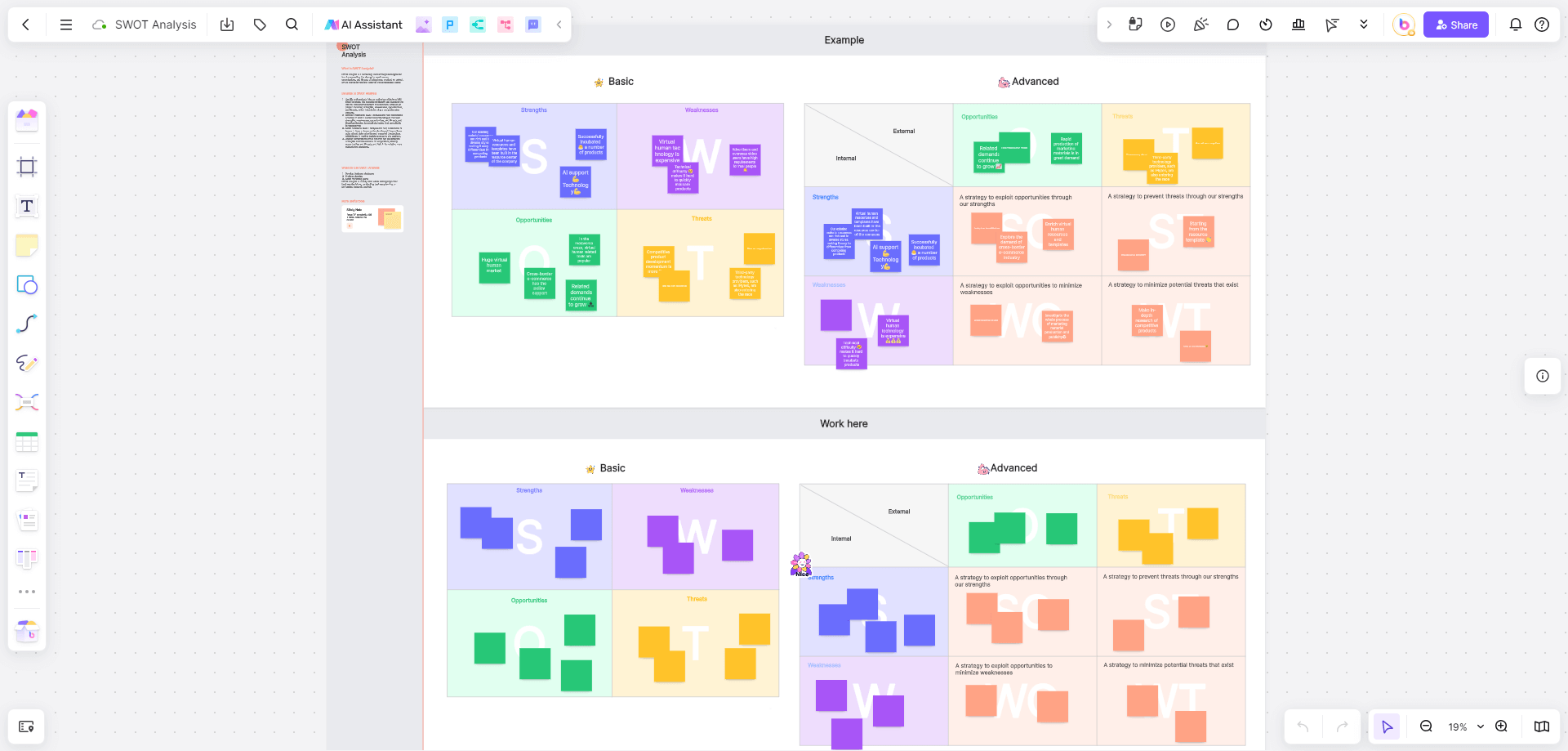
Strategic planning is a structured effort to define long-term goals and determine the best strategies to achieve them. It involves setting objectives, analyzing competitive environments, and aligning resources to ensure the organization’s mission and vision are realized.
Why is Strategic Planning Crucial for Organizations?
Strategic planning is crucial for several reasons:
Direction and Focus: It provides a clear direction and focus for the organization, ensuring every team member understands the organization's goals and how their work contributes to achieving them.
Resource Allocation: It helps in the efficient allocation of resources, ensuring that time, money, and human resources are used effectively.
Proactive Management: It enables organizations to anticipate and prepare for future challenges and opportunities rather than reacting to them.
Performance Measurement: It establishes benchmarks and metrics to measure progress and performance against strategic goals.
Competitive Advantage: It helps organizations identify and capitalize on their strengths while mitigating weaknesses, thereby gaining a competitive edge in the market.
Key Steps in the Strategic Planning Process

1. Mission and Vision Statements
Purpose: Define the organization's purpose and long-term aspirations.
Process: Involve key stakeholders to ensure alignment and buy-in.
The first step in strategic planning involves crafting mission and vision statements. The mission statement articulates the organization’s purpose, while the vision statement outlines long-term goals. Engaging key stakeholders in this process ensures that everyone is aligned and committed to these foundational elements.
2. Environmental Scanning
Purpose: Analyze internal and external factors that can affect the organization's success.
Tools: SWOT Analysis (Strengths, Weaknesses, Opportunities, Threats), PEST Analysis (Political, Economic, Social, Technological).
The second step in strategic planning is conducting an environmental scan. This involves analyzing both internal and external environments to understand the factors that could impact the organization's success. Tools like SWOT and PEST analyses are invaluable for this purpose.
3. Strategy Formulation
Purpose: Develop strategies to achieve the mission and vision.
Process: Set long-term goals, identify strategic options, and choose the best strategies.
The third step in strategic planning is strategy formulation. Here, organizations set long-term goals and identify various strategic options to achieve these goals. The chosen strategies should align with the mission and vision statements and leverage insights gained from the environmental scan.
4. Strategy Implementation
Purpose: Put the chosen strategies into action.
Process: Develop action plans, allocate resources, and assign responsibilities.
Once strategies are formulated, the next step in strategic planning is implementation. This involves developing detailed action plans, allocating necessary resources, and assigning responsibilities to ensure the strategies are executed effectively.
5. Evaluation and Control
Purpose: Monitor progress and make necessary adjustments.
Tools: Performance metrics, feedback loops, regular reviews.
The final step in the strategic planning process is evaluation and control. Organizations must monitor progress towards their strategic goals using performance metrics and feedback loops. Regular reviews can help identify any deviations from the plan and make necessary adjustments.
Ensuring Comprehensive Coverage in Your Strategic Plan
To ensure comprehensive coverage in your strategic planning process, consider the following:
Involve Stakeholders: Engage employees, customers, and partners in the planning process.
Data-Driven Decision Making: Use accurate data and analysis to inform strategic choices.
Flexibility: Build in flexibility to adapt to changing circumstances.
Clear Communication: Communicate the plan clearly across the organization.
Regular Updates: Periodically review and update the plan to reflect new developments.
By following these principles, organizations can create robust and adaptable strategic plans that drive long-term success.
How to Create a Strategy Planning Process that Stands Out with Boardmix
Boardmix is a powerful tool that can significantly enhance your strategic planning process. It offers a range of features designed to facilitate collaboration, visualization, and efficient management of strategic plans. Here’s how to create a standout strategy planning process using Boardmix:
Collaborative Environment for Strategy Planning

Boardmix is designed to foster a highly collaborative environment.
Real-Time Collaboration: Boardmix enables multiple stakeholders to work on the same document simultaneously. This real-time collaboration ensures that everyone can contribute their insights and ideas, leading to a more inclusive and comprehensive strategic plan.
Commenting and Feedback: Stakeholders can leave comments, suggestions, and feedback directly on the strategic planning documents. This feature ensures continuous improvement and refinement of the plan.
User Permissions: Define specific roles and permissions for team members, ensuring that everyone has the appropriate level of access and control over the planning documents.
Visualization Tools for Strategy Planning
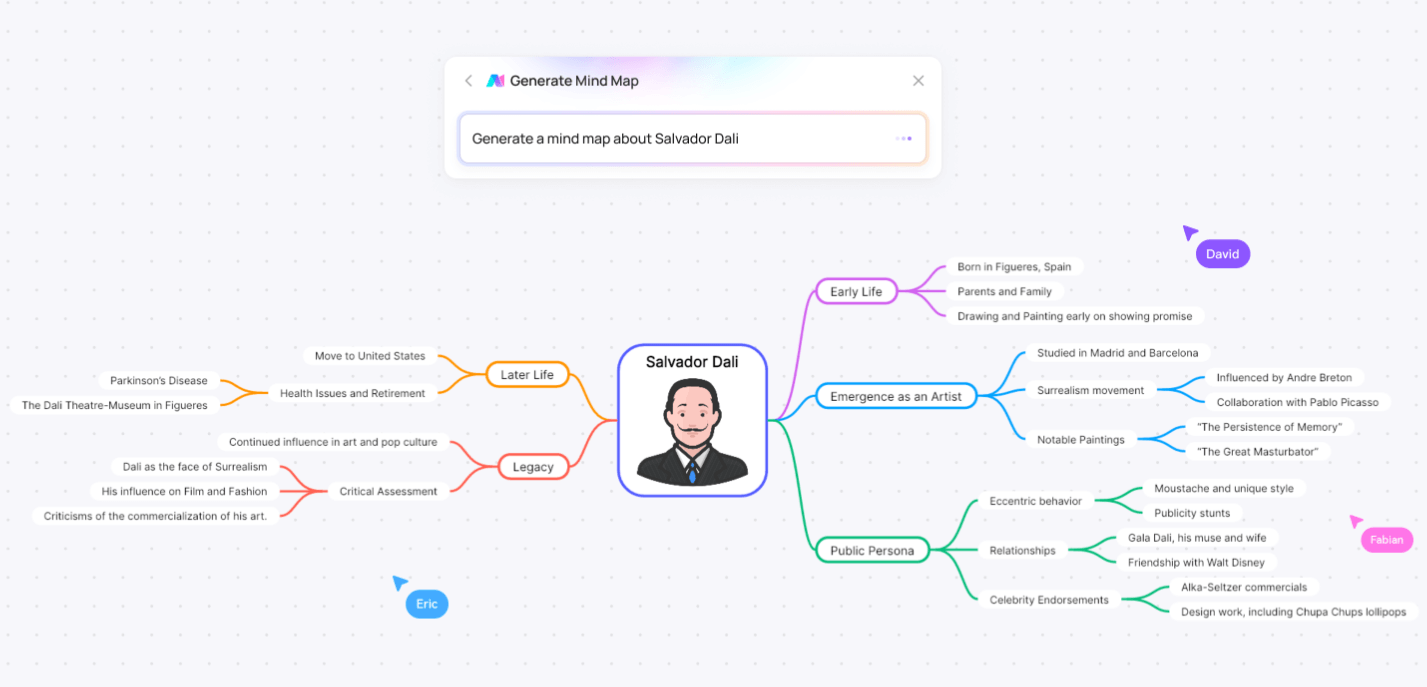
Visualization is a key component of effective strategic planning, and Boardmix excels in this area with a variety of tools:
Mind Maps: Use mind maps to brainstorm and organize ideas visually. Mind maps can help identify connections between different strategic elements and facilitate creative thinking.
Flowcharts: Create flowcharts to map out processes and workflows. This can help in visualizing the steps involved in strategy implementation and identifying potential bottlenecks.
SWOT Diagrams: Utilize SWOT diagrams to analyze strengths, weaknesses, opportunities, and threats. This tool is essential for the environmental scanning phase of strategic planning.
Gantt Charts: Develop Gantt charts to outline timelines and milestones. This helps in tracking the progress of various strategic initiatives and ensuring timely execution.
Templates for Strategy Planning
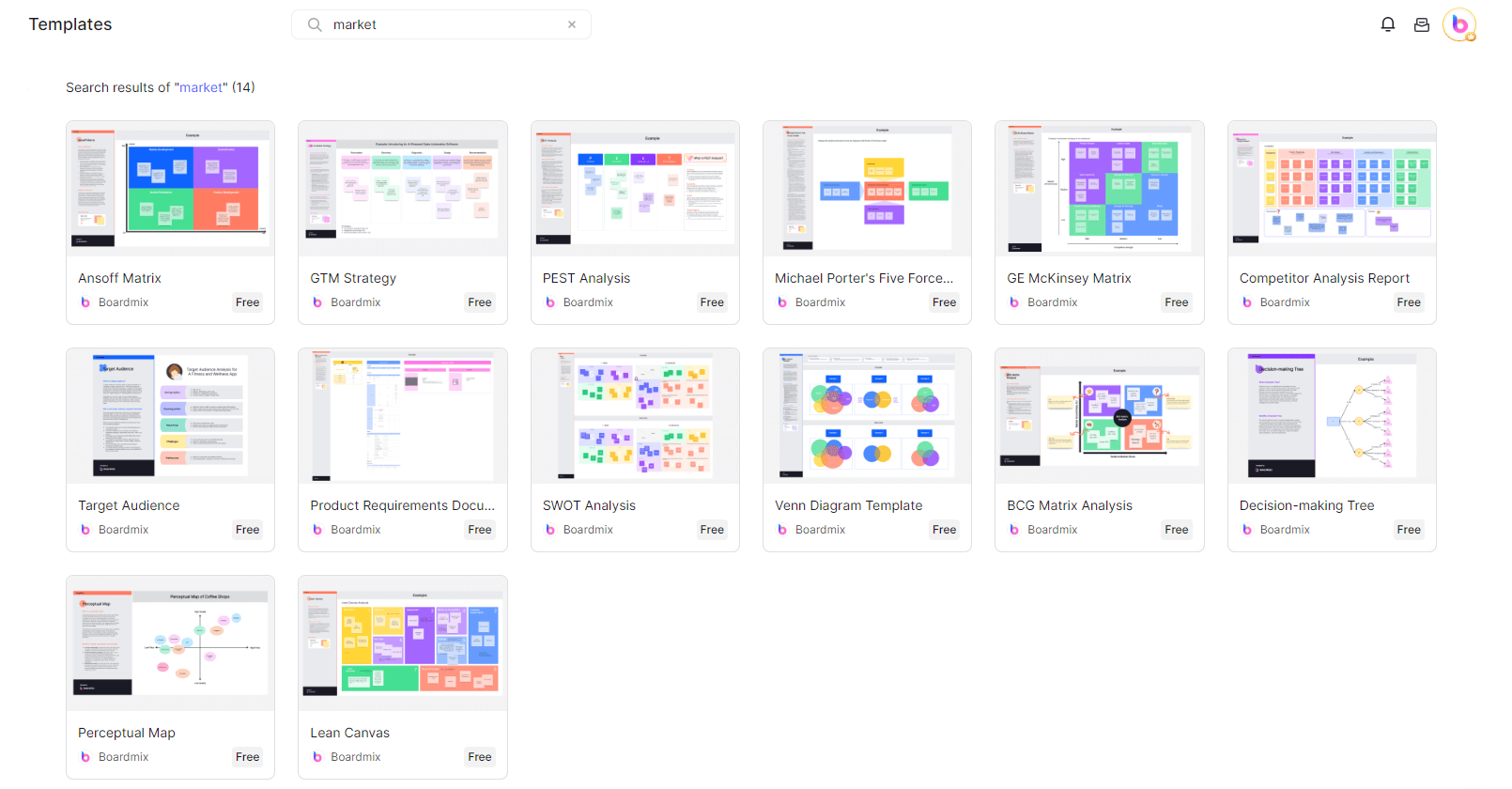
Boardmix offers a wealth of templates that can streamline your strategic planning process:
Strategic Planning Templates: Use pre-built templates for mission and vision statements, SWOT analysis, and strategic goals. These templates ensure that all critical elements of the strategic planning process are covered.
Customization: Customize templates to fit the specific needs of your organization. This flexibility allows you to tailor the planning process to your unique strategic objectives.
Tracking and Updates for Strategy Planning

Keeping track of progress and making updates is crucial for the success of any strategic plan. Boardmix provides robust features for this purpose:
Progress Tracking: Use built-in tracking tools to monitor the progress of strategic initiatives. This includes setting milestones, deadlines, and key performance indicators (KPIs).
Automated Notifications: Receive automated notifications for upcoming deadlines, completed tasks, and other important updates. This ensures that everyone stays informed and on track.
Version Control: Maintain version control of all strategic planning documents. This allows you to track changes, revert to previous versions if needed, and ensure that the most current plan is always accessible.
Documentation for Strategy Planning
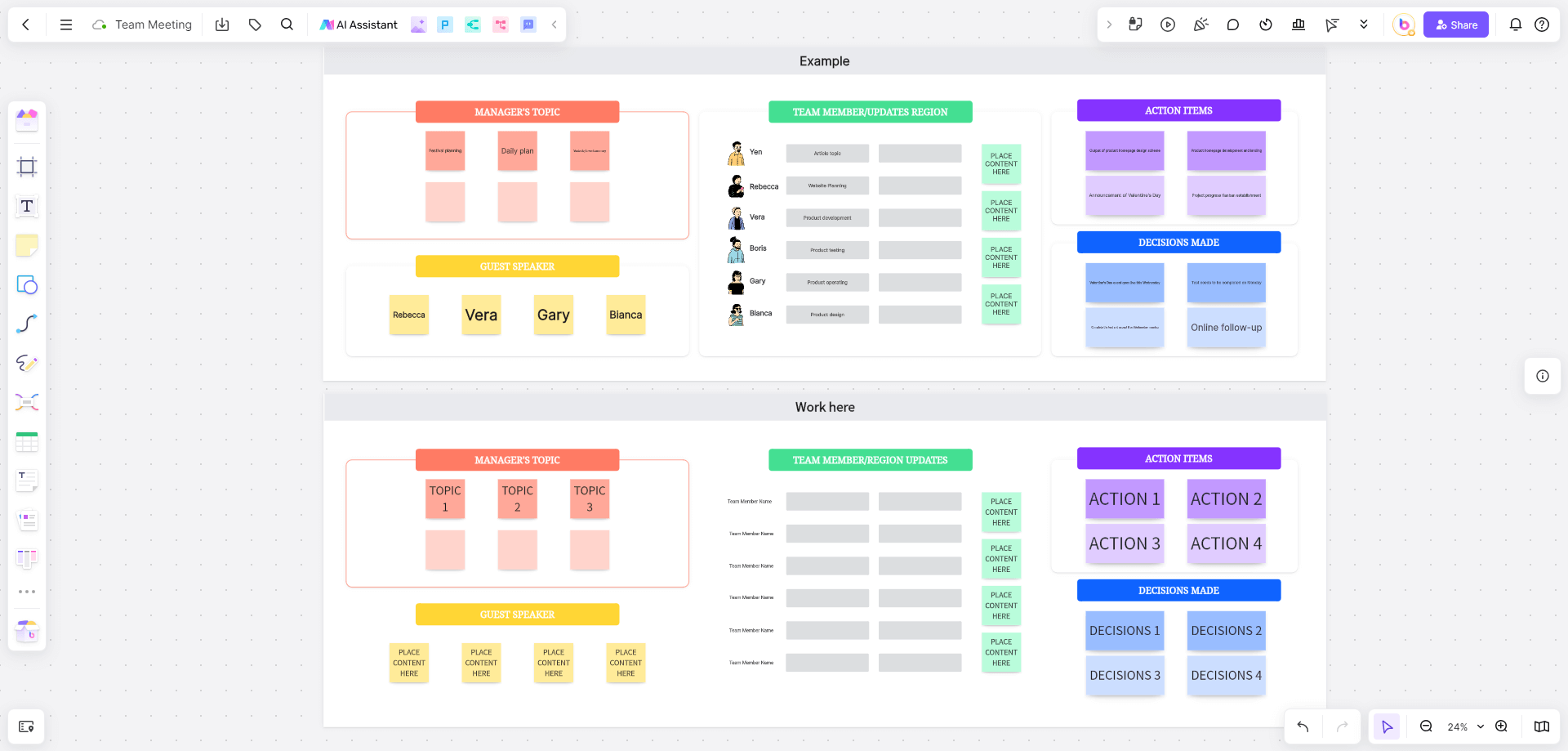
Effective documentation is essential for a successful strategic planning process. Boardmix offers several features to support this:
Centralized Repository: Store all strategic planning documents in a centralized repository. This ensures that all team members have easy access to the documents they need.
Search Functionality: Use the search feature to quickly find specific documents or information within the repository. This saves time and improves efficiency.
Integration: Integrate Boardmix with other tools and platforms your organization uses, such as project management software, CRM systems, and cloud storage services. This ensures seamless information flow and reduces duplication of effort.
Incorporating Boardmix Features for Strategy Planning
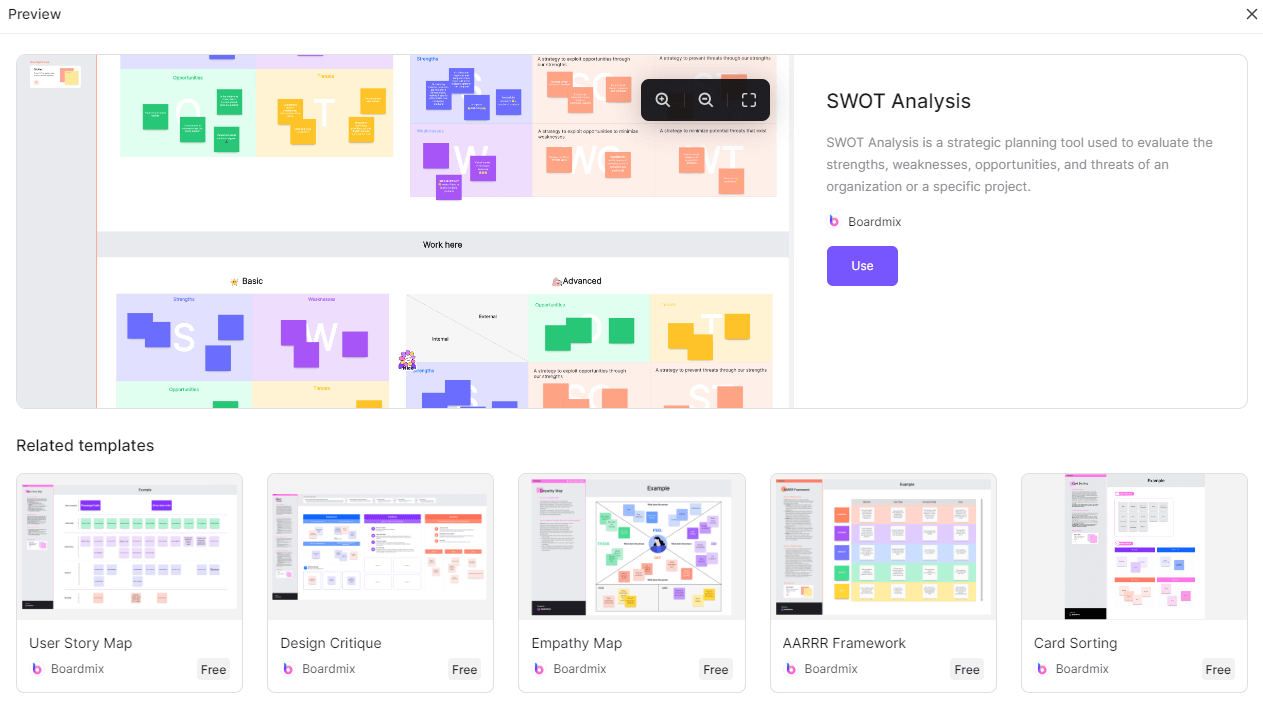
By incorporating these features, Boardmix can help create a strategy planning process that is both effective and engaging:
Collaborative Brainstorming: Utilize mind maps and flowcharts in Boardmix for collaborative brainstorming sessions. Encourage team members to contribute ideas and insights.
Structured Analysis: Conduct SWOT and PEST analyses using Boardmix templates. Ensure that all relevant factors are considered and documented.
Strategy Development: Develop strategic goals and action plans using customizable templates. Assign responsibilities and set timelines using Gantt charts.
Regular Check-Ins: Schedule regular check-ins and progress reviews using Boardmix’s tracking and update features. Adjust plans as needed based on feedback and performance metrics.
Continuous Improvement: Use the commenting and feedback features to continuously refine and improve the strategic plan. Document all changes and updates for future reference.
Overcome Common Challenges in the Strategic Planning Process
Lack of Alignment: Ensure that all stakeholders are on the same page through regular communication and involvement.
Resource Constraints: Prioritize initiatives and allocate resources based on strategic importance.
Resistance to Change: Foster a culture that embraces change through leadership and continuous engagement.
Inadequate Data: Invest in data collection and analysis tools to make informed decisions.
Poor Implementation: Develop clear action plans with assigned responsibilities and timelines.
By addressing these common challenges, organizations can improve the effectiveness of their strategic planning process.
Real-Life Examples of Effective Strategic Planning Processes

Example 1: Apple Inc.
Apple’s strategic planning process focuses on innovation, brand loyalty, and premium product positioning. Their clear vision and consistent execution have led them to dominate the tech industry. Apple regularly revisits its mission and vision statements to ensure they remain relevant and inspiring.
Example 2: Toyota
Toyota’s strategic planning process emphasizes continuous improvement (Kaizen) and long-term thinking. Their commitment to quality and efficiency has made them a leader in the automotive industry. Toyota’s environmental scanning includes a thorough analysis of market trends and technological advancements.
Example 3: Starbucks
Starbucks’ strategic planning process includes market expansion, product diversification, and customer experience enhancement. Their ability to adapt and innovate has kept them at the forefront of the coffee industry. Starbucks uses robust data analytics to inform their strategy formulation and implementation.
These strategic planning process with examples show how a well-executed strategic planning process can lead to sustained success. By following the essential steps in strategic planning and learning from these real-life strategic planning process with examples, organizations can develop strategies that drive growth and resilience.
Conclusion
In conclusion, a well-defined strategic planning process is vital for any organization aiming for long-term success. By following the key steps in strategic planning—from defining mission and vision statements to evaluating and controlling strategies—organizations can create comprehensive plans that align with their goals and adapt to changing environments.
Tools like Boardmix can enhance the planning process, making it more collaborative and effective. Overcoming common challenges and learning from real-life strategic planning process with examples can further enhance the strategic planning process, ensuring sustained growth and competitive advantage.








